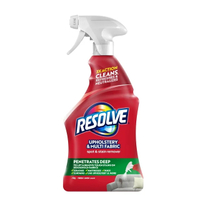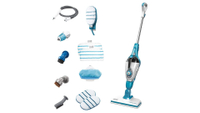How to clean upholstered dining chairs – 6 hacks to banish stains and spills
Upholstered dining chairs might be the comfiest dining option, but they are also most prone to stains – here’s how to clean them


If comfort at the dining table is a priority, then upholstered dining chairs are the way to go. However, in a room so prone to spills, splatters, and stains, keeping them clean and smelling their best is a nightmare – especially if children are involved.
From removing red wine stains to dealing with crumbs, cleaning upholstery in a dining room can sometimes seem like an uphill battle after every big meal or fun family occasion.
Luckily for us, professional cleaners have perfected the art of cleaning these chairs and keeping them spotless – all without too much manual scrubbing. This is what they suggest.
How to clean upholstered dining chairs
The first thing to do when cleaning upholstered dining chairs is to check the care label, usually on the base of the chair, to see if the material is ‘wet-cleanable’ or dry clean only, begins Jennie Holmes, cleaning expert and branch manager of ServiceMaster Clean. This will help direct the method and the products you use to clean the chairs.
If in doubt, always spot-test any cleaning products in an inconspicuous place before committing to a full clean.
1. Remove debris
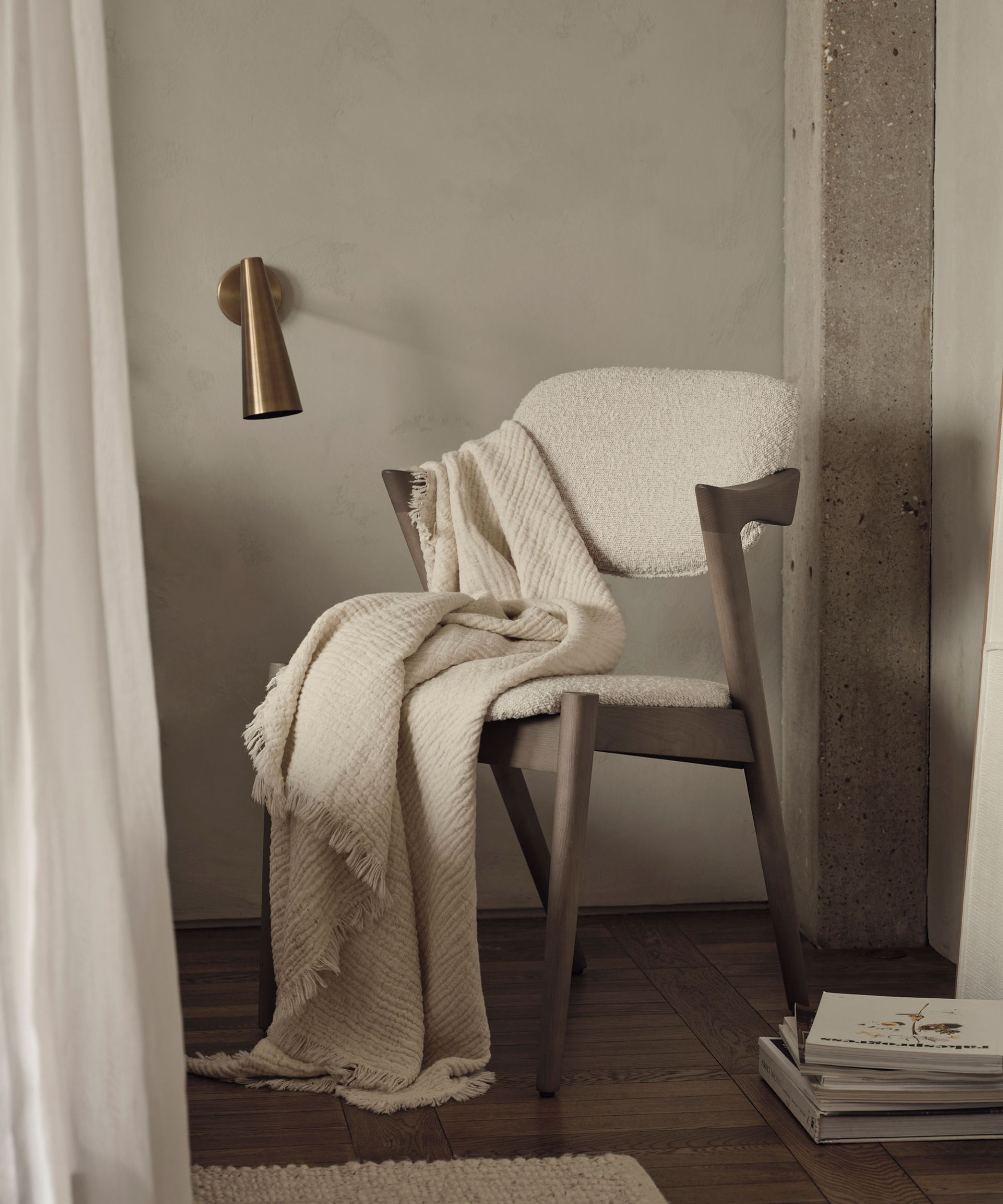
The first step is to remove any loose debris – both before deep cleaning upholstered dining chairs, and when cleaning up after a dinner party.
Jennie Holmes, cleaning expert, recommends using a microfiber cloth to remove any loose debris, and then using your vacuum to remove smaller bits. ‘Especially around buttons or seams etc.'
2. Use mild detergent or upholstery cleaner
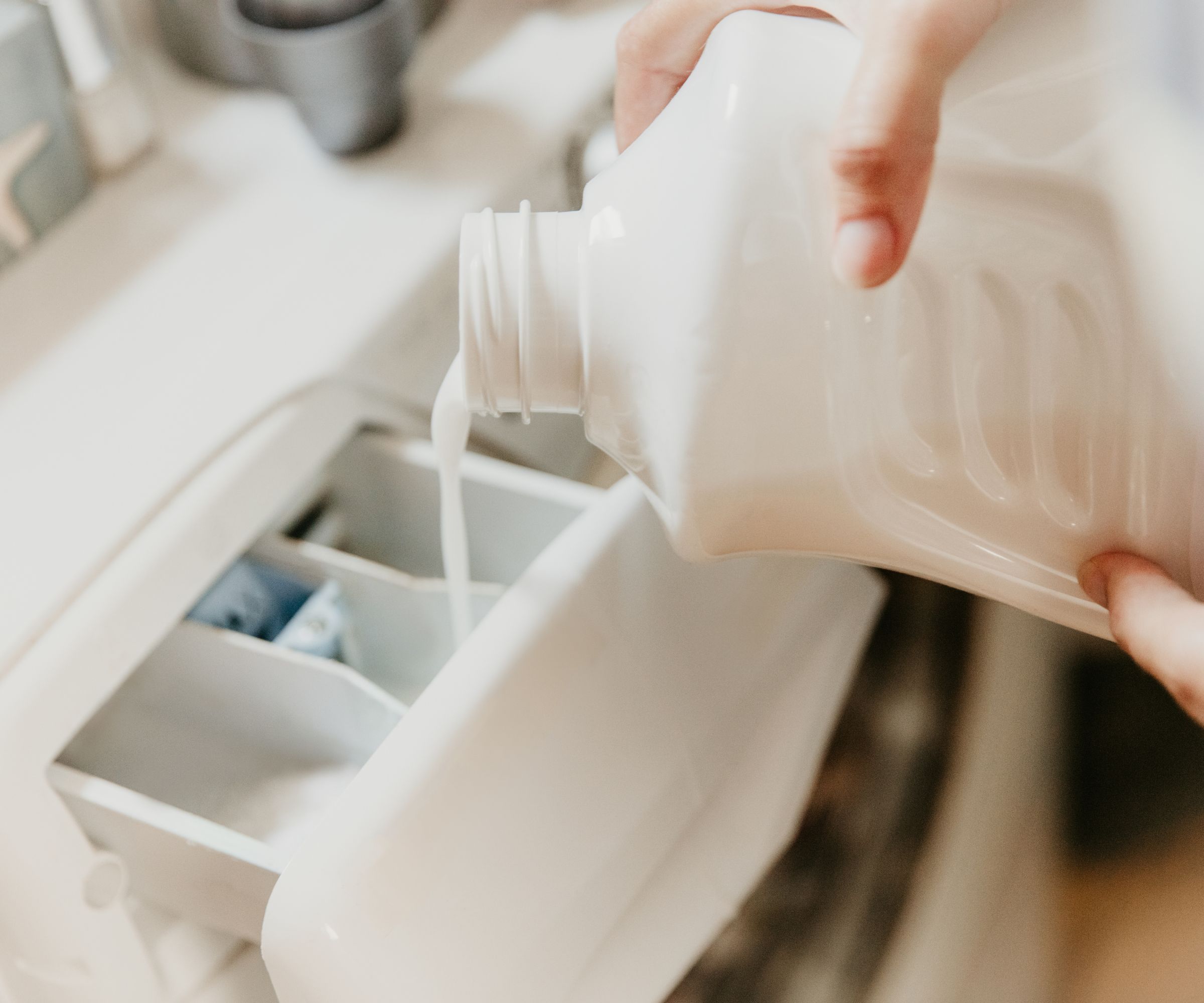
Much like washing couch cushions without damaging them, it is best to use a dedicated upholstery cleaner, or a mild detergent at most, to remove any stains or discoloration without risking further damage, says Erin Zanelli, co-owner and Founder of Tranquil Home:
‘For stains or soiled areas, prepare a solution of mild detergent or upholstery cleaner diluted with water, following the manufacturer's instructions. Apply the solution sparingly to a clean cloth or sponge, then dab at the stain in a gentle, blotting motion. Avoid rubbing vigorously, as this may damage the fabric fibers.
‘Once the stains are lifted, dampen another clean cloth with plain water and blot the treated areas to remove any residual cleaning solution.’
Resolve Upholstery Cleaner |$5.22 at Walmart
This spray cleaner is formulated to safely lift away dirt and odor from household fabrics. Perfect for use on sofas, mattresses, drapes, and more.
3. Use an enzyme-based cleaner for food stains

In the case of truly stubborn stains, you can try enzyme-based cleaners, adds Jennie Holmes, cleaning expert. ‘These will “eat” into the stain and remove it,’ she explains.
‘As always, test this on an inconspicuous area first and always blot and never rub as this can damage the face of the fabric.’
4. Try steam cleaning
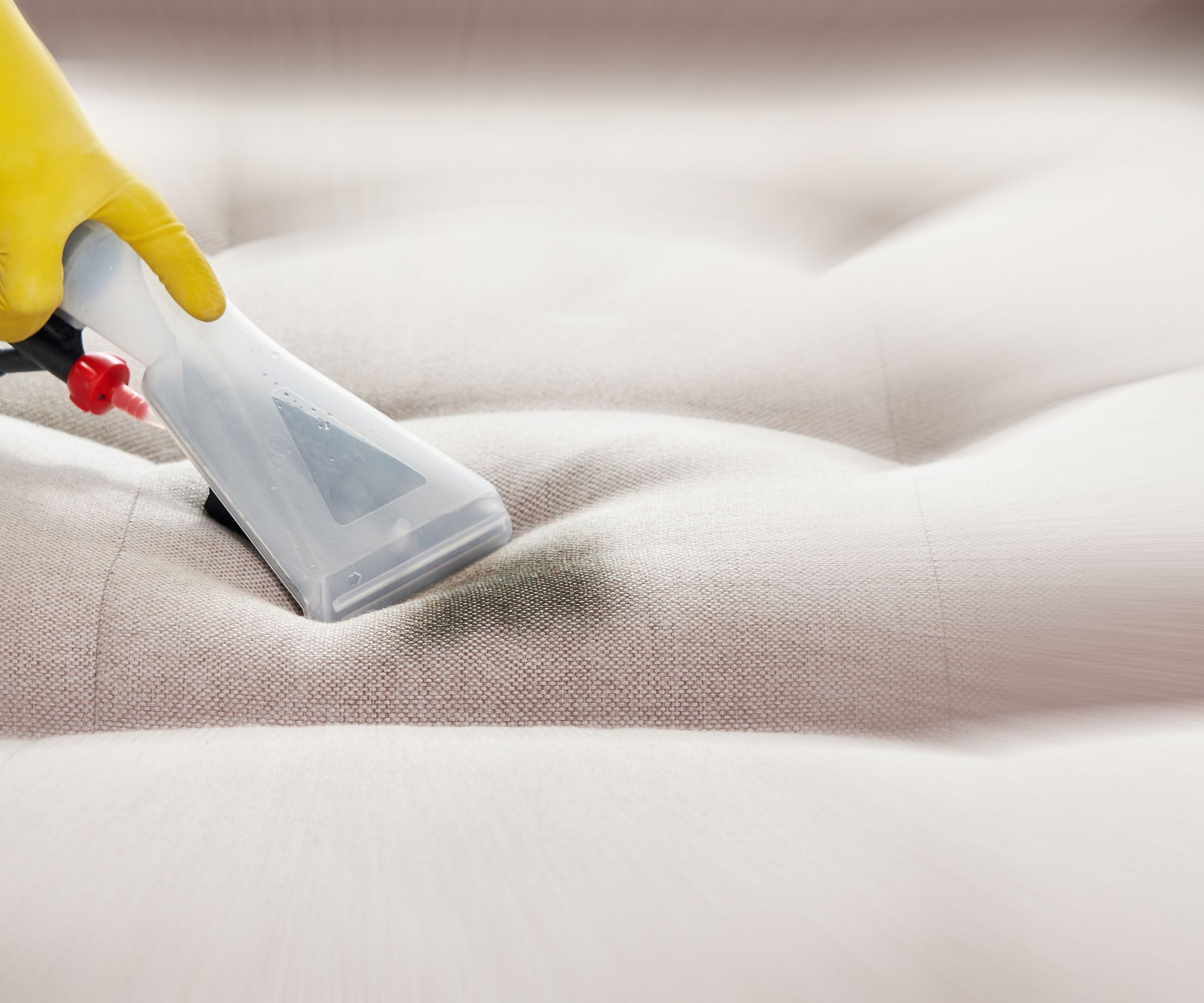
Just as you would steam clean a couch, you can steam clean upholstered dining chairs to break down surface dirt and sanitize the chair after meals.
Before steam cleaning, check the care label to ensure both the upholstery and the chair stuffing are safe for high temperatures (some foams and velvets, for instance, may melt or misshapen).
When picking the best steam cleaner, opt for one with an upholstery attachment to make this process easier and safer.
Black+Decker 7-in-1 Steam-Mop | $199.99 at Amazon
Rated H&G's favorite steam cleaner, I love this for cleaning everything in my home, from tiles and grout to soft furnishings and carpets. There is nothing it can't do.
5. Avoid color transfer and watermarks

A good cleaning tip to keep in mind is using plain colored cleaning cloths to avoid color transfer from the cloth to the upholstery – especially in the case of white or cream dining chairs, warns Jade Piper, cleaning expert and operations manager at BetterCleans:
‘Don't use colored cloths or sponges as the dye might transfer onto the upholstery and cause more stains. And be careful not to oversaturate the fabric, watermarks are an eyesore caused by too much moisture.’
6. Dry naturally

With the chairs cleaned and returned to their former glory, it is time to let them dry. Air drying is the best way to do this, allowing them to sit in a well-ventilated space to air out, says Erin Zanelli, eco-cleaning expert. ‘You can also use a fan to expedite the drying process,’ she adds.
If you need to speed the process up, using a dehumidifier near the chairs will pull moisture out of the surrounding air and encourage faster drying, reducing the chance of musty odors being left behind. If the weather is on your side, you can also put the chairs out in the sun to dry and further deodorize. Leaving them out for a short amount of time shouldn’t cause any sun bleaching, but this is something to consider with darker-colored fabrics and woods.
FAQs
Will baking soda remove stains from upholstery?
Baking soda, when mixed with distilled water into a paste, can be a good stain remover for light, fresh stains on upholstery. When applying the paste, blot the stain gently, rather than rubbing it in, and allow it to sit for up to an hour. Then, remove with a damp (not soaking wet) cloth.
How long do upholstered dining chairs last?
Well-made upholstered dining chairs that are cleaned and cared for properly can last anywhere between seven to 15 years. This is because upholstery generally wears out far more quickly than leather or plain wood, especially if they are used regularly or not cleaned correctly. Designs made from solid wood with thicker cushions typically last longer.
With the chairs clean, it is good to look for some maintenance tactics to prevent them from becoming dangerously stained again in the future, recommends cleaning expert Jade Piper. She suggests applying some fabric-protecting finish to keep the stains out.
‘You can also buy washable seat covers. They come in different colors and patterns so it’s easy to match your home’s aesthetic. It would also help to clean it once every six to 12 months, but if you want to be sure it still looks as good as new, maybe vacuum it once a week.’
Sign up to the Homes & Gardens newsletter
Design expertise in your inbox – from inspiring decorating ideas and beautiful celebrity homes to practical gardening advice and shopping round-ups.

Chiana has been at Homes & Gardens for two years and is our resident 'queen' of non-toxic living. She spends most of her time producing content for the Solved section of the website, helping readers get the most out of their homes through clever decluttering, cleaning, and tidying tips. She was named one of Fixr's top home improvement journalists in 2024.
-
 Lenny Kravitz says design is 'just like music' – and the stunning materials of this bedroom embody this laidback luxe approach
Lenny Kravitz says design is 'just like music' – and the stunning materials of this bedroom embody this laidback luxe approachRich textures and opulent finishes come together in a Los Angeles bedroom designed by the musician – it's ultra-chic, but relaxed
By Sophie Edwards
-
 Courtney Love's historic loft combines rock star luxury with raw New York bones – it's on the market for almost $9.5 million
Courtney Love's historic loft combines rock star luxury with raw New York bones – it's on the market for almost $9.5 millionThe singer's former SoHo home features exposed brick walls, original wooden columns, a gas fireplace, and high ceilings – take the tour
By Hannah Ziegler
